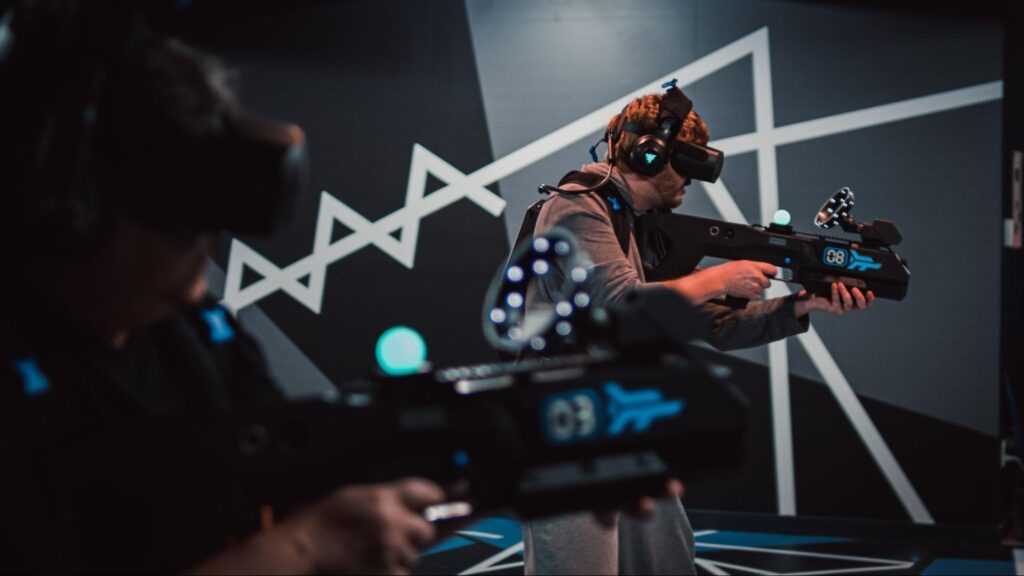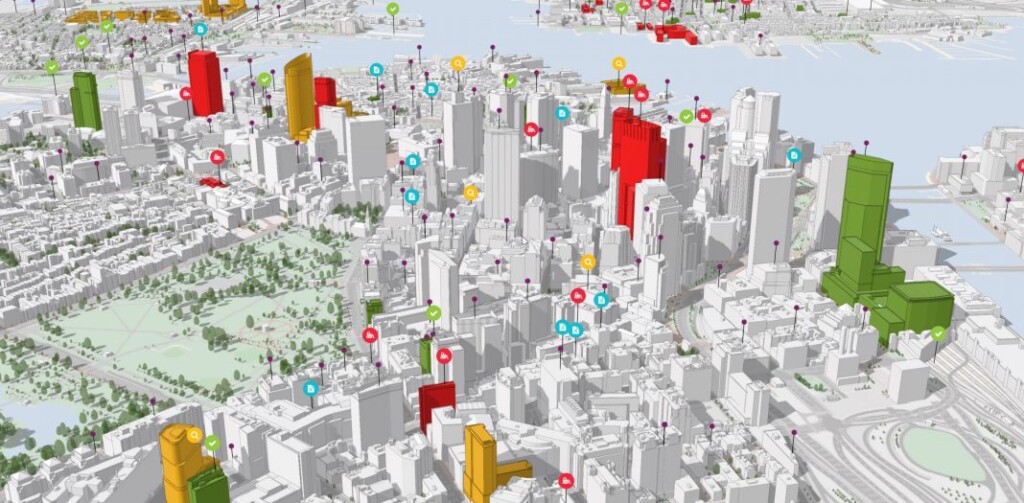In a noteworthy revelation, a McKinsey study unveils the healthcare AI world as a playground for the “big shots.” With venture capital (VC) funding soaring to a staggering $8.5 billion, it seems the private sector is keeping the pulse of this AI revolution. Brace yourself for a star-studded affair, featuring big tech giants, startups, pharmaceutical superheroes, medical device wizards, and even health insurers joining forces in this nascent AI healthcare ecosystem. It’s an AI party you don’t want to miss!
The concept of smart healthcare is transforming the way in which healthcare tech perceives problems and designs solutions. Digital technologies such as Artificial Intelligence and Machine Learning are revolutionizing the health sector, offering services that are increasingly focused on a patient-first approach. The digital twin technology is one among these.
What is a digital twin?

The digital twin concept is the convergence of the physical and the virtual world where every entity gets a dynamic digital representation. In simpler terms, it is a virtual representation of a physical object or being through its lifecycle.
For instance, a digital twin is a virtual or digital replica of a living being or object. Creating a digital twin requires intricate and detailed data from imaging records, in-person measurements, lab results, and genetics which is then used to design an exact digital replica.
While it might be easy to dismiss this concept as just another tech trend that’s low on substance – no thanks to the metaverse notion that has been created. But digital twins provide authentic services – a far cry from the entertainment metaverse concepts.
How do digital twins work?

A digital twin is the virtual counterpart of any physical being – be it a piece of machinery, a factory set up, a hospital building, a town or city, or even a living being.
Creating a digital twin of any physical asset involves the collection and synthesis of data from various sources including physical data, manufacturing data, operational data, and insights from analytics software. Using AI-based algorithms, this data is integrated into a virtual model. The data from analytics is continuously fed into these models to gather relevant insights regarding the physical asset. The consistent flow of data is key to acquiring the best possible analysis and insights regarding the asset which helps in optimizing the outcome. This is how a digital twin works as a live model of the physical entity.
The dynamic, three-dimensional digital twin models created in the healthcare space allow practitioners, medical students, administrators, designers, engineers, and facilities teams to work on a unified vision together. The digital twin technology and its uses in healthcare bear tremendous potential – let’s see how and where.
Applications of digital twins technology in healthcare

But first, let’s answer a question that’s probably on everyone’s minds –
Isn’t a digital twin a fancier name for data modeling?
Well, the answer to that is no, and here’s how. What sets the digital twin technology apart from data modeling is that the latter was mostly a simulation that was created to research a specific scenario, only to be discarded or reused sporadically.
Digital twin technology aims to create models that are designed to evolve alongside their real-life counterparts, replicating them as data is continually added. Let’s take a look at some examples.
Clinical operations and facilities management

A team at the University of California, San Francisco (UCSF) employed data-rich, dynamic digital twins of hospital buildings to help in monitoring temperature, airflow, and even the maintenance and location of hospital beds. Their model even allows officials to adjust and control some operations, like air and water systems. Maintenance of air circulation systems and other operations in hospitals has been crucial during COVID-19.
Early in the pandemic, a fire alarm went off in a full COVID-19 ward at the UCSF Medical Center on Parnassus Avenue near Golden Gate Park. There was no fire, and emergency response was canceled, but there was another hazard that could have serious consequences. The fire alarm system automatically triggered changes in the air circulation system. Were fans blowing air from the COVID ward into other areas? Sending in work crews to assess that would have put people at risk, and disrupted the ward.
Consulting the digital twin allowed Bruce Mace, executive director of UCSF Health’s facilities and support services department, and his team to look deeply into the system and ensure the airflow was safe. “We were able to control the situation remotely, and safely,” he says.
Disease and treatment modeling

Once a digital twin of a patient is created, it can become a test subject for treatments of diseases or injuries before use on the individual or persons at large. Armed with adequate biological data, scientists can drive more precise and effective medical interventions that are tailored to the individual patient.
Furthermore, it is also possible to create individualized genome sequencing for someone affected by cancerous tumors. An AI system can study and analyze the behavior and response of these tumors and can be used to design an individualized biological agent to fight the tumors.
Since a digital twin is essentially a digital avatar of a patient, it can be analyzed to predict ways to prevent future illness, provide direction for preventive maintenance, and even offer performance enhancements. The potential isn’t just limited to finding a cure, but devising a data-driven pathway to managing health and preventing future illness.
Initiatives in this sector include –
The UK Government’s 100,000-genome project to sequence whole genomes from National Health Service’s 85,000 patients. The project is focusing on common types of cancer and infectious diseases.
The Mayo Clinic Centre for Individualized Medicine in the United States gathers genomic information on large numbers of individuals providing more data for scientists and technologists to leverage.
Surgery simulation and risk assessment
A cerebral aneurysm is a possibly life-threatening occurrence where the blood vessel bulge due to a weakening in an arterial wall. Found in about 2% of the population, a fraction of these aneurysms can result in clots, stroke, or even death.
France-based startup Sim&Cure has developed a patient-based digital twin for treating aneurysms. It deploys simulations and digital twins to help neurosurgeons maximize patient safety as they undergo surgery helping them pick the right endovascular implants that optimize aneurysm repair.
Aiding diagnosis and treatment decision-making is another area where digital twin technology is looking to leave a mark. It can enable healthcare professionals to gain thorough, real-time analysis of a patient and their previous and current health status based on data extracted from different health sources like imaging records, in-person measurements, labs, and genetics. The digital twin will then simulate the health status of the patient and AI technology will fill in any gaps with the most accurate, relevant, and scientifically solid information available.
Digital Twins which incorporate Big Data, Artificial Intelligence (AI), Machine Learning (ML), and the Internet of Things are key in the healthcare sector. The global Digital Twin Technology market size is estimated to be worth US$ 2028 million in 2022 and is forecast to a readjusted size of US$ 4133.3 million by 2028 with a CAGR of 12.6% during the forecast period 2022-2028 (source).
Digital twin technology is already aiding the healthcare services sector to keep pace with the ever-evolving user needs and preferences, experiences, and customization. The knowledge this technology lends can result in improved healthcare outcomes for the public at large.









